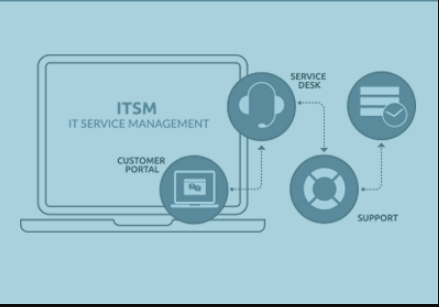How ITSM Tools Can Help Incident Management?
Without this, chaos may occur. Incidents or unexpected disruptions can easily impact normal operations and bring down productivity levels. This may be due to an asset not functioning properly or a network failure. Some examples of incidents include application issue, printer issue, Wi-Fi connectivity issue, desktop crash, file sharing issue, and more.
In this article, we will take a closer look at the basics of incident management and the role of ITSM tools in the process.
Identifying the incident
The first step in the incident management process is determining the issue and logging it. Once an employee identifies a problem, you must record it. If you receive the incident via paid or free ITSM tools, the first two steps are already done for you. On the other hand, if the incident was reported through a phone call, email, or text, you have to manually log it in your ITSM tool or service desk. The ticket usually includes:

- The name of the person who reported
- The date and time of the report
- A description of the incident
- An identification number assigned to the incident for easy tracking
Categorize your incident
Designate a logical, intuitive category for the incident. Failure to do so can prevent you from analyzing data to look for trends and patterns – which is a critical part of effective problem management that can thwart future incidents. Make sure to use free ITSM tools like service desk solution to customize incident categories.
Know what to prioritize
Assign the level of priority for each incident. Start by evaluating its impact on the organization. Consider how many people will be affected, as well as its potential financial, security, and compliance implications. This will help you figure out how urgently you must resolve it.
Define your incidents’ severity levels before they even occur. This makes it simpler for the incident manager to gauge priority quickly. When you aren’t sure about the priority level, go with the higher one. After all, it’s better to be safe than sorry.
Respond
Incident response can be extensive that’s why it’s broken down into different parts. After identifying, categorizing, and prioritizing an incident, here’s what to do next.
Initial diagnosis
In this stage, the IT employee formulates a quick hypothesis about the possible cause of the issue, so they can either prepare to fix it or follow the procedures and gather the right resources to have it resolved. Knowledge bases and diagnostic manuals can be used in this step. If the first agent can address the issue based on initial diagnosis and the usage of available tools, the incident can be sorted out and closed accordingly. Otherwise, you need to escalate.
Incident escalation
While your primary support team can resolve a large number of the most frequent incidents without moving it to the next line of support, there are still those that have to be escalated. For issues needing escalation, you must gather and log the correct information to speed things up and resolve the problem promptly.
Investigation and diagnosis
This happens throughout the entire incident lifecycle. You need to investigate and carefully diagnose each problem every step of the way to get the tools you need for its resolution.
Resolution and recovery
After arriving at a diagnosis, it’s time to perform the necessary steps to resolve the incident. It must be done within your established Service Level Agreement (SLA). After which, expect some recovery time before the operations can be fully restored. Remember, some fixes may require testing and deployment after the resolution has been applied.
Incident closure
The incident is moved back to the service desk for its closure. To guarantee quality and ensure a smooth process, only service desk employees can close incidents. They should also check with the person who reported the incident if the resolution was satisfactorily done, so it can be closed.
Final Thoughts
The incident management process may seem too organized especially for a small company. However, incidents happen too often so it only makes sense to have a formal incident handling process. This can help reduce impact and enable you to restore services quickly.
If you are interested in integrating an ITSM system, contact ITarian. Our ITSM tools can help manage incidents by simplifying your ticketing process, allowing you to focus on what really matters.